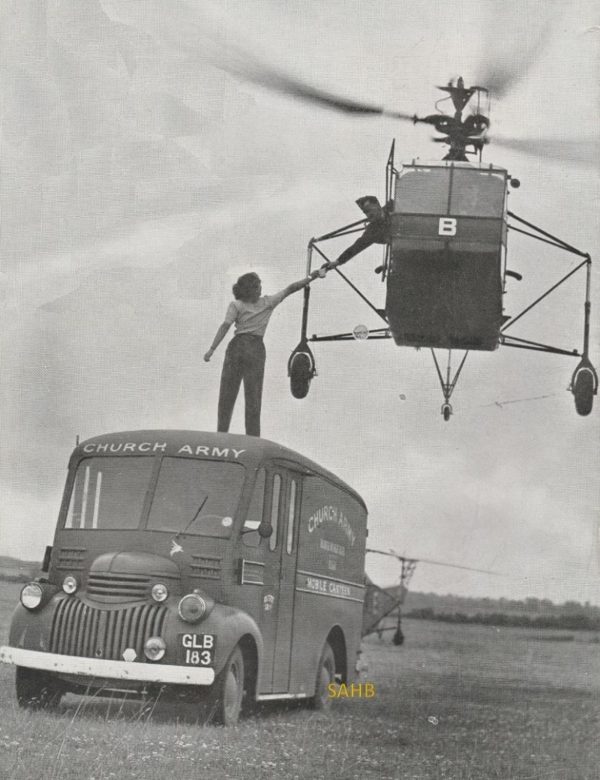
It is 1946 – and the RAF Helicopter School is giving a display. In this picture, it is showing off the versatility of the Sikorsky-designed Hoverfly training helicopter.
The young lady is standing on the roof of a Chevrolet AK light truck. Introduced in 1941, this was a departure for Chevrolet; up to that year, their trucks and medium-duty vehicles shared an appearance with Chevrolet passenger coupes and sedans, culminating in the 1940 Chevrolet Master range. The 1941 Chevy AK changed all that, with a streamlined frontal appearance for the light trucks that differed significantly from that of the car range.
This design lasted virtually unchanged until 1947, using the GM A platform. It was also branded and sold as a GMC truck, with the main visual difference being the vertical grille bars of the Chevrolet and the horizontal bars of the GMC.
We cannot be sure how this truck came to be owned and run by the Church Army, but we can speculate that this left-hand-drive vehicle came over to the United Kingdom with the American armed forces as they readied themselves for the 1944 invasion, and was either bodied specifically for the Church Army or snapped up by them as army surplus.
The Church Army continues today, and has throughout its history had heavy involvement with the armed forces. During World War 1 its resources were diverted to support servicemen at home and abroad, running recreation huts, tents, hostels, rest homes and mobile canteens and visiting injured troops in hospital.
Again during World War 2 the Church Army provided physical and spiritual comfort all over Europe and at home. Tea carts were placed at railway stations to welcome the servicemen passing through and care was given as people sheltered in the underground stations, taking down tea urns, food and babies’ bottles.
But mobile canteens, of which our picture shows an example, were a speciality of the Church Army. They played a big role in supporting the men and women serving in the forces. These canteens would be stocked with necessities and some luxuries, including writing materials, soap, razor blades, toothbrushes and paste, cigarettes, cleaning materials and books, as well as plenty of tea and cake. The canteens would travel to people manning guns, searchlights and listening posts of the anti-aircraft defences and those on coastal defence batteries.
The role of the Church Army continued after World War 2, providing chaplains and, as appears to be the case here, still running mobile canteens in peacetime – although delivering a sandwich to a hovering helicopter pilot appears to us to be going above and beyond the call of duty.
Picture courtesy of the Richard Roberts Archive







Leave a Comment